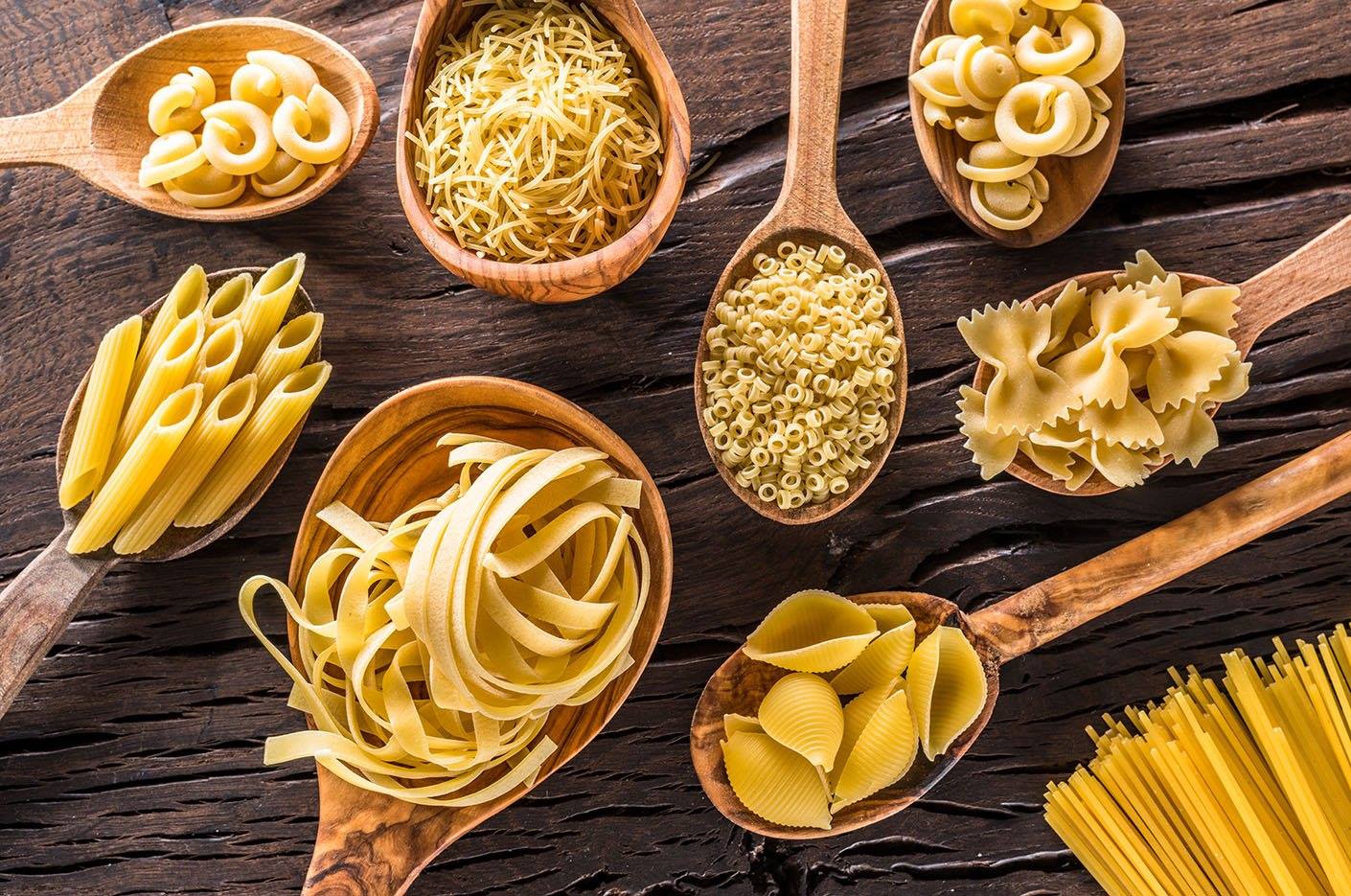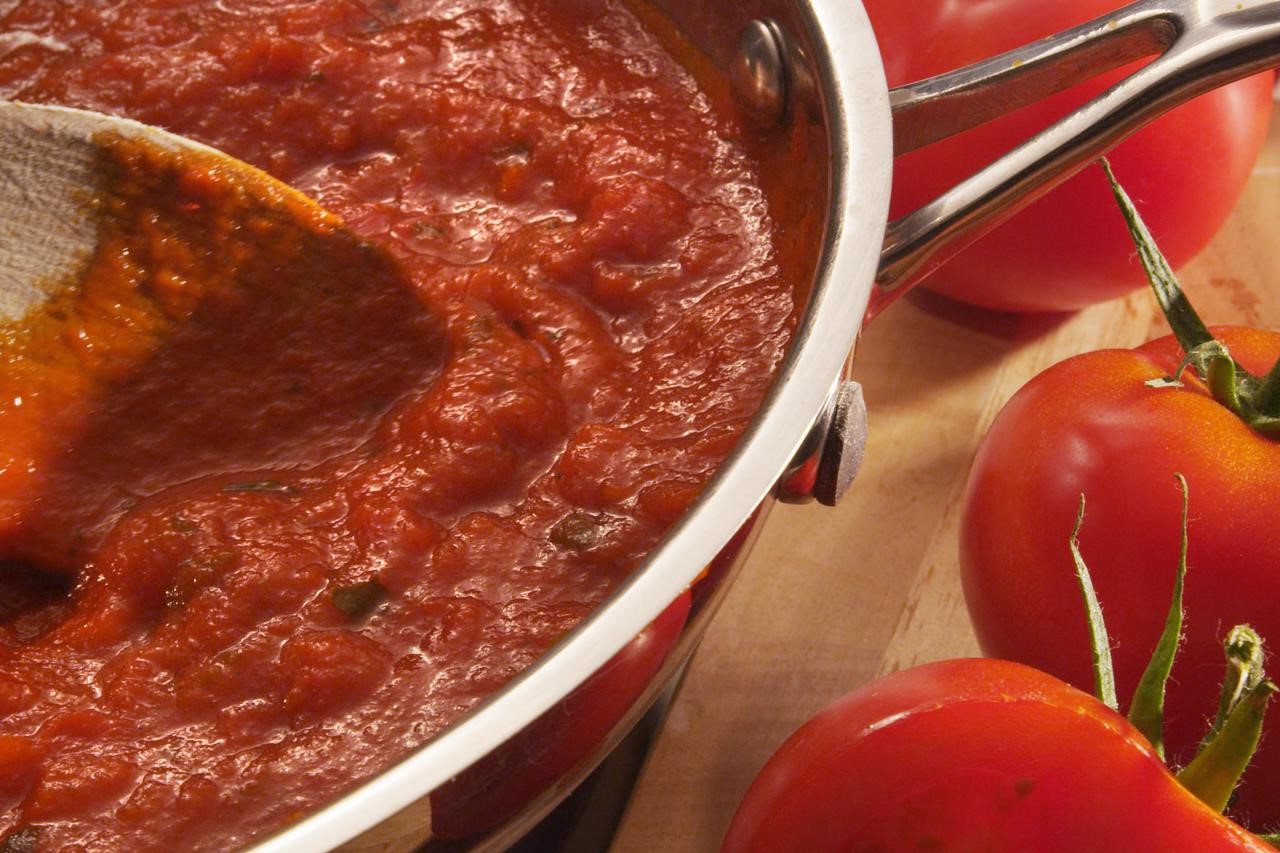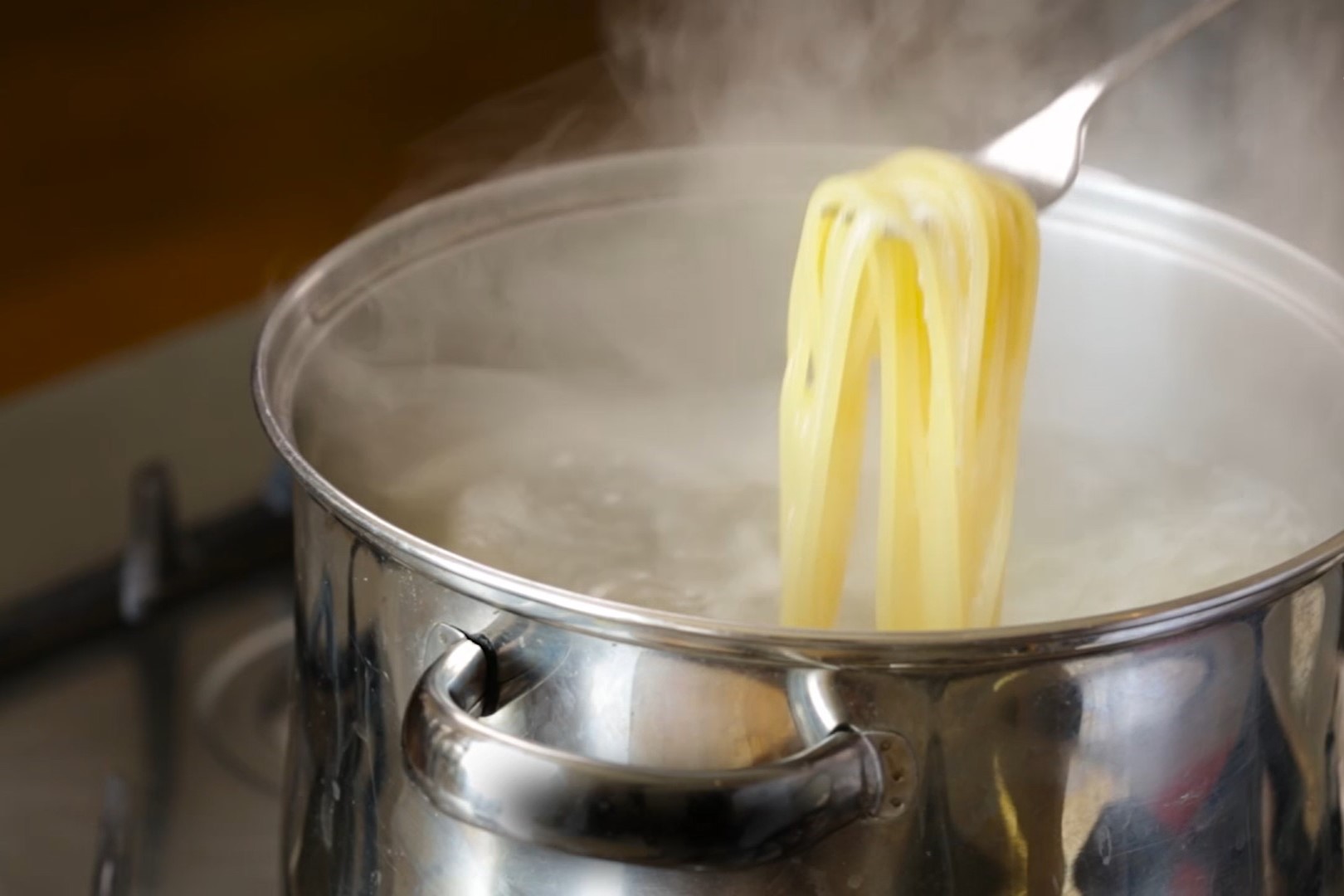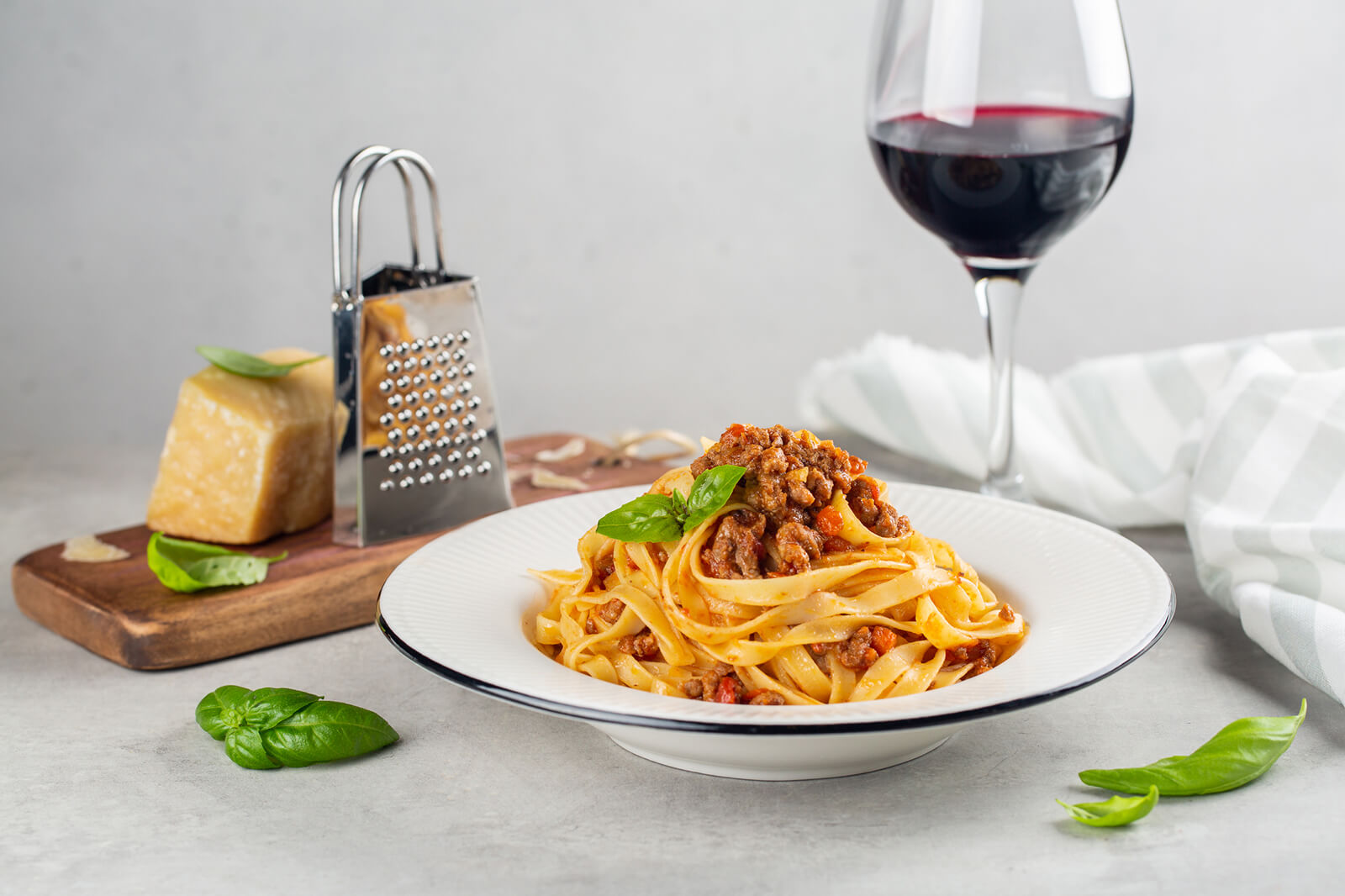Home>Food and Cooking>The Ultimate Guide To Different Types Of Pasta: Spaghetti, Linguini, Fettuccine, And Tagliatelle Explained!


Food and Cooking
The Ultimate Guide To Different Types Of Pasta: Spaghetti, Linguini, Fettuccine, And Tagliatelle Explained!
Published: February 8, 2024
Discover the ultimate guide to different types of pasta, including spaghetti, linguini, fettuccine, and tagliatelle. Explore the world of food and cooking with our comprehensive explanations!
(Many of the links in this article redirect to a specific reviewed product. Your purchase of these products through affiliate links helps to generate commission for Noodls.com, at no extra cost. Learn more)
Table of Contents
Introduction
Pasta is a beloved staple in cuisines around the world, known for its versatility and ability to be paired with a wide array of sauces and ingredients. From the comforting simplicity of spaghetti to the delicate elegance of linguini, the world of pasta offers a diverse range of shapes and textures to suit every palate. In this comprehensive guide, we will delve into the nuances of four popular types of pasta: spaghetti, linguini, fettuccine, and tagliatelle.
Each variety has its own unique characteristics, making it ideal for specific dishes and flavor profiles. By understanding the distinctions between these pasta types, you can elevate your culinary skills and create memorable dining experiences for yourself and your loved ones. So, let's embark on a flavorful journey through the world of pasta, exploring the origins, textures, and best culinary pairings for each type.
Now, let's start by unraveling the timeless allure of spaghetti, a classic favorite that has earned a special place in the hearts of pasta enthusiasts worldwide.
Spaghetti
Spaghetti, with its long, thin cylindrical shape, is perhaps the most iconic and widely recognized type of pasta. Originating from Italy, this beloved pasta variety has transcended cultural boundaries to become a staple in kitchens across the globe. The name "spaghetti" is derived from the Italian word "spaghetto," which means "thin string" or "twine," perfectly encapsulating the slender, elongated form of this pasta.
One of the most appealing aspects of spaghetti is its incredible versatility. Its smooth, round texture and ability to hold onto sauces make it a perfect canvas for a wide range of culinary creations. Whether it's coated in a rich marinara sauce, adorned with savory meatballs, or drizzled with a delicate olive oil and garlic infusion, spaghetti adapts effortlessly to a myriad of flavor profiles.
When it comes to cooking spaghetti, achieving the ideal texture is key. Al dente, an Italian term meaning "to the tooth," describes the perfect balance of firmness and tenderness that spaghetti should possess when cooked. This ideal texture allows the pasta to retain a slight resistance to the bite, providing a satisfying mouthfeel that complements the accompanying sauce.
From a nutritional standpoint, spaghetti made from durum wheat flour offers a good source of complex carbohydrates and a moderate amount of protein, making it a wholesome foundation for a variety of dishes. Additionally, whole wheat or gluten-free alternatives provide options for individuals with specific dietary preferences or restrictions.
In the realm of culinary pairings, spaghetti's compatibility with an extensive range of ingredients and sauces makes it an endlessly adaptable choice. Whether it's paired with a classic Bolognese sauce, fresh seafood, or vibrant, herb-infused pesto, spaghetti serves as a versatile platform for culinary creativity.
In summary, the enduring popularity of spaghetti can be attributed to its simplicity, adaptability, and universal appeal. This timeless pasta variety continues to captivate food enthusiasts with its ability to effortlessly complement an endless array of flavors, making it a cherished component of countless culinary traditions worldwide.
Linguini
Linguini, a beloved member of the pasta family, offers a delightful departure from the traditional spaghetti. With its long, flat, and slender shape, linguini captivates the senses with its elegant appearance and delicate texture. Originating from the Campania region of Italy, linguini, which translates to "little tongues" in Italian, embodies a graceful and refined presence on the plate.
The defining feature of linguini lies in its flat, ribbon-like form, which sets it apart from the cylindrical shape of spaghetti. This unique structure allows linguini to interact with sauces in a distinct manner, creating a harmonious marriage of flavors and textures. The broad surface area of linguini enables it to cradle and capture the essence of various sauces, resulting in a more pronounced and immersive dining experience.
When it comes to cooking linguini, achieving the perfect al dente texture is paramount. This delicate balance ensures that the linguini maintains a tender yet resilient quality, allowing it to harmonize seamlessly with the accompanying sauce. The ideal cooking time for linguini typically ranges between 7 to 11 minutes, depending on personal preference and desired firmness.
From a culinary standpoint, linguini serves as a versatile canvas for an array of vibrant and robust sauces. Its broad, flat structure allows it to effortlessly complement creamy Alfredo sauces, zesty tomato-based marinara, or seafood-infused creations. The interplay between the supple linguini and the luscious sauces results in a symphony of flavors and textures that tantalize the palate.
Nutritionally, linguini crafted from durum wheat flour offers a wholesome source of complex carbohydrates and a moderate amount of protein, contributing to a satisfying and nourishing dining experience. Additionally, gluten-free and whole wheat alternatives provide inclusive options for individuals with specific dietary preferences or requirements, ensuring that linguini can be enjoyed by a diverse range of individuals.
In summary, linguini's graceful form, versatile nature, and ability to harmonize with an array of sauces make it a cherished component of Italian and global culinary traditions. Whether adorned with succulent seafood, bathed in a velvety cream sauce, or enrobed in a vibrant pesto, linguini continues to captivate food enthusiasts with its ability to elevate the dining experience to new heights.
Fettuccine
Fettuccine, a beloved member of the pasta family, exudes a timeless charm and culinary versatility that has secured its place as a cherished classic in the realm of Italian cuisine. With its long, flat ribbons, fettuccine offers a distinct textural experience that sets it apart from its slender counterparts, such as spaghetti and linguini. The name "fettuccine" is derived from the Italian word "fettuce," which means "ribbons," perfectly encapsulating the pasta's elegant and ribbon-like appearance.
The defining feature of fettuccine lies in its wide, flat shape, which provides a substantial and indulgent mouthfeel. This broader structure allows fettuccine to interact with sauces in a unique manner, enveloping and embracing the flavors to create a rich and immersive dining experience. The ample surface area of fettuccine enables it to capture and hold onto the essence of various sauces, resulting in a more pronounced and satisfying culinary encounter.
When it comes to cooking fettuccine, achieving the perfect al dente texture is crucial. This delicate balance ensures that the fettuccine maintains a tender yet resilient quality, allowing it to harmonize seamlessly with the accompanying sauce. The ideal cooking time for fettuccine typically ranges between 8 to 12 minutes, depending on personal preference and desired firmness. The al dente fettuccine serves as a canvas for the flavors of the accompanying sauce, creating a harmonious union of textures and tastes.
From a culinary perspective, fettuccine serves as an ideal partner for a diverse range of sauces, thanks to its broad and velvety texture. Whether it's generously coated in a luscious Alfredo sauce, adorned with a hearty ragu, or embellished with a vibrant medley of vegetables, fettuccine's luxurious form elevates the dining experience to new heights. The interplay between the supple fettuccine and the sumptuous sauces results in a symphony of flavors and textures that captivate the senses.
Nutritionally, fettuccine crafted from durum wheat flour offers a satisfying source of complex carbohydrates and a moderate amount of protein, contributing to a nourishing and indulgent dining experience. Additionally, gluten-free and whole wheat alternatives provide inclusive options for individuals with specific dietary preferences or requirements, ensuring that fettuccine can be enjoyed by a diverse range of individuals.
In summary, fettuccine's wide, flat ribbons, culinary adaptability, and ability to harmonize with an array of sumptuous sauces make it a beloved cornerstone of Italian and global culinary traditions. Whether adorned with creamy sauces, hearty meat-based concoctions, or vibrant vegetable medleys, fettuccine continues to captivate food enthusiasts with its ability to create memorable and satisfying dining experiences.
Tagliatelle
Tagliatelle, a revered member of the pasta family, embodies an exquisite charm and culinary allure that has solidified its place as a beloved classic in Italian gastronomy. With its long, flat ribbons, tagliatelle offers a distinct textural experience that sets it apart from its slender counterparts, such as spaghetti and linguini. The name "tagliatelle" is derived from the Italian word "tagliare," which means "to cut," perfectly encapsulating the pasta's elegant and ribbon-like appearance.
The defining feature of tagliatelle lies in its broad, flat shape, which provides a substantial and indulgent mouthfeel. This wider structure allows tagliatelle to interact with sauces in a unique manner, enveloping and embracing the flavors to create a rich and immersive dining experience. The ample surface area of tagliatelle enables it to capture and hold onto the essence of various sauces, resulting in a more pronounced and satisfying culinary encounter.
When it comes to cooking tagliatelle, achieving the perfect al dente texture is crucial. This delicate balance ensures that the tagliatelle maintains a tender yet resilient quality, allowing it to harmonize seamlessly with the accompanying sauce. The ideal cooking time for tagliatelle typically ranges between 7 to 10 minutes, depending on personal preference and desired firmness. The al dente tagliatelle serves as a canvas for the flavors of the accompanying sauce, creating a harmonious union of textures and tastes.
From a culinary perspective, tagliatelle serves as an ideal partner for a diverse range of sauces, thanks to its broad and velvety texture. Whether it's generously coated in a luscious Bolognese sauce, adorned with a delicate truffle-infused cream sauce, or embellished with a vibrant medley of garden-fresh vegetables, tagliatelle's luxurious form elevates the dining experience to new heights. The interplay between the supple tagliatelle and the sumptuous sauces results in a symphony of flavors and textures that captivate the senses.
Nutritionally, tagliatelle crafted from durum wheat flour offers a satisfying source of complex carbohydrates and a moderate amount of protein, contributing to a nourishing and indulgent dining experience. Additionally, gluten-free and whole wheat alternatives provide inclusive options for individuals with specific dietary preferences or requirements, ensuring that tagliatelle can be enjoyed by a diverse range of individuals.
In summary, tagliatelle's wide, flat ribbons, culinary adaptability, and ability to harmonize with an array of sumptuous sauces make it a beloved cornerstone of Italian and global culinary traditions. Whether adorned with rich meat-based ragu, delicate seafood creations, or vibrant herb-infused sauces, tagliatelle continues to captivate food enthusiasts with its ability to create memorable and satisfying dining experiences.
Conclusion
In conclusion, the world of pasta is a rich tapestry of culinary delights, with each variety offering its own unique characteristics and captivating allure. From the timeless appeal of spaghetti to the delicate elegance of linguini, the indulgent richness of fettuccine, and the refined charm of tagliatelle, each type of pasta presents a distinct sensory experience that adds depth and nuance to culinary creations.
As we journeyed through the nuances of these four popular types of pasta, it became evident that the diversity of shapes, textures, and culinary potential inherent in each variety contributes to the vibrant tapestry of global gastronomy. The versatility of pasta as a culinary canvas enables it to harmonize with an extensive range of sauces, proteins, and vegetables, offering endless possibilities for creative expression in the kitchen.
Whether it's the comforting embrace of a classic marinara sauce enveloping strands of al dente spaghetti, the luxurious interplay of fettuccine with a velvety Alfredo sauce, or the exquisite pairing of tagliatelle with a delicate truffle-infused cream sauce, each type of pasta invites us to embark on a sensory journey that celebrates the artistry of flavor and texture.
Furthermore, the nutritional value and dietary inclusivity of pasta varieties crafted from durum wheat flour, as well as gluten-free and whole wheat alternatives, ensure that individuals with diverse dietary preferences and requirements can partake in the pleasures of pasta without compromise.
Ultimately, the enduring appeal of spaghetti, linguini, fettuccine, and tagliatelle lies in their ability to transcend cultural boundaries, evoke nostalgic memories, and inspire culinary innovation. Whether enjoyed in a cozy family setting or savored in a fine dining experience, the art of pasta serves as a testament to the universal language of food and the joy it brings to our lives.
In essence, the exploration of these pasta varieties not only enriches our understanding of culinary traditions but also invites us to savor the simple pleasures and profound complexities that intertwine in every plate of pasta, celebrating the timeless art of good food and shared experiences.














